The following ‘Radicals, Renegades and Revolutionaries’ were part of the ‘RAD Newcastle Exhibition – Newcastle & the Hunter through a radical lens’. The exhibition was held at Newcastle Museum in June-August 2017.
The Radical Newcastle project was an initiative of the University of Newcastle’s School of Humanities and Social Science and is supported by the University Library (Cultural Collections and Hunter Living Histories) and the University Gallery. For further information about the RAD Newcastle exhibition click the HERE

Barbara Curthoys (1924 -2000) was a key figure during an important period in the history of both Communism and feminism in Australia. She moved to Newcastle in 1953, becoming a full-time activist, and over the next 40 years was a key figure in several movements for social and political change in the Hunter region. Barbara was active in the Union of Australian Women (UAW) which politicised women’s domestic issues at a time when women were expected to be full-time homemakers. She was the secretary of the Trades Hall Equal Pay Committee organising campaigns for equal pay and the celebration of International Women’s Day. She also wrote many articles on Australian women’s history for the UAW journal “”Our Women””. As secretary of the Newcastle Trades Hall Council Aborigines Committee in the1960s, she assisted Harrie Saunders in his campaign to improve conditions at the Purfleet Aboriginal Settlement at Taree. As founding member of the Newcastle Peace Forum and as secretary of the Newcastle branch of the Australian Peace Committee, she pursued her lifelong commitment to world peace. Barbara was prominent in their campaigns to ban the atom bomb, and their opposition to the Vietnam War and nuclear testing. In 1991, her active commitment to world peace was recognised in the Peggy Hill Peace Award.
Before second wave feminism placed child care and equal pay on the mainstream political agenda, she kept these and other demands alive within the only political party who took these issues seriously in the immediate postwar period, the Communist Party of Australia (CPA). Barbara Curthoys was one of that small band of women who fearlessly campaigned for racial and social equality, and world peace at a time when it was politically risky to do so. As an optimist and independent thinker, she made friends across the political spectrum.
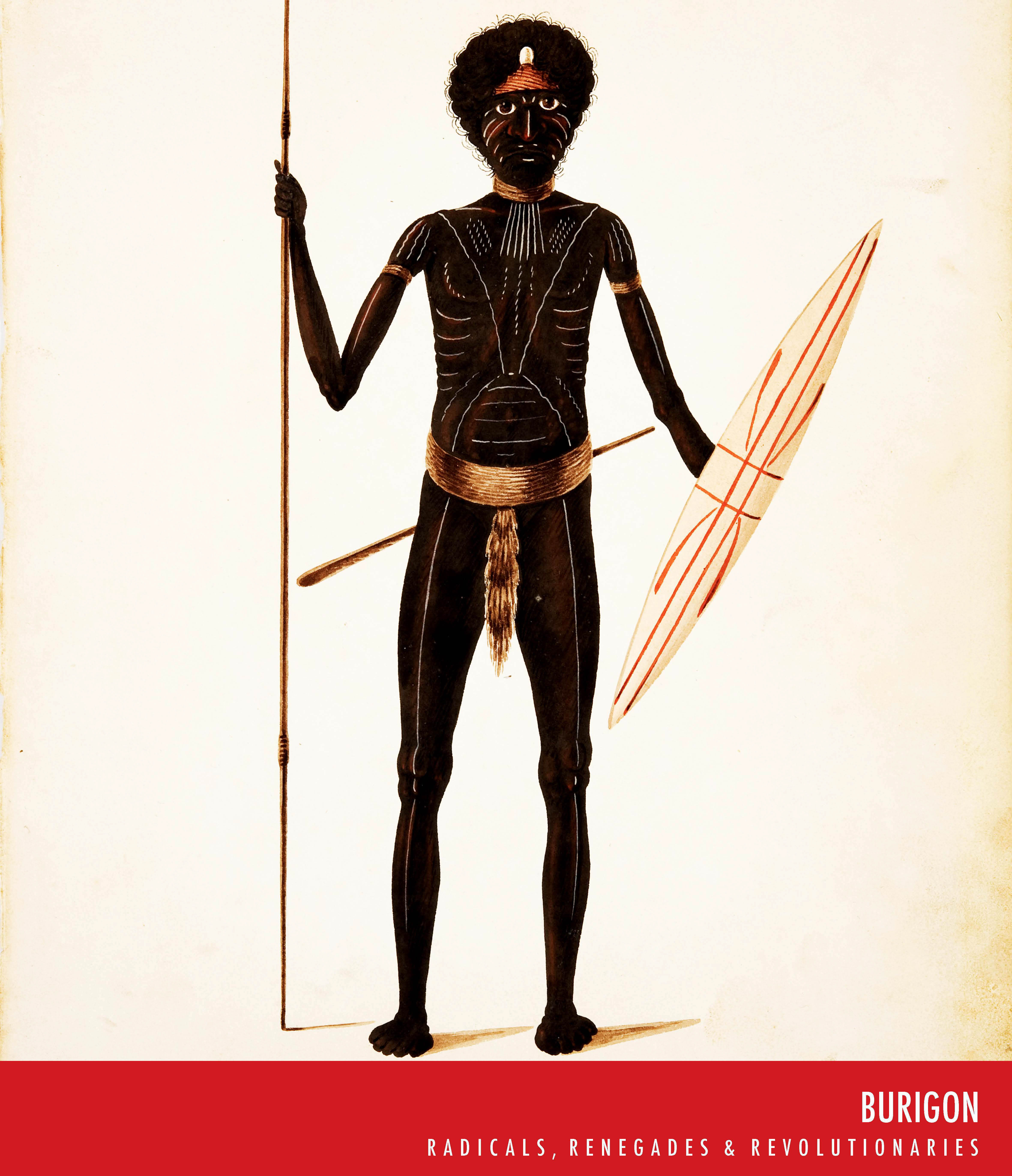
Burigon, also known as Long Jack, was a leader of the Awabakal people of the Newcastle and Lake Macquarie district. Much of what is known about Burigon comes from the accounts of colonial officials, in particular James Wallis (1785-1858), who was commandant of the penal settlement at Newcastle between 1816 and 1818. Wallis described Burigon as “the elder chieftain of his tribe, … a keen, shrewd fellow, attached to me and to the Europeans generally from interested motives, for we often administered to his wants”. Other accounts described Burigon as “a sensible and intelligent man” who was “very active in apprehending the runaways from the settlement”. Unfortunately such co-operation led to his death in 1821, when he was stabbed by an absconding Newcastle convict whom he had attempted to recapture. The man who killed Burigon became the first European tried, convicted and executed under British law for the murder of an Aboriginal man in Australia.
It is believed that Burigon’s friendships with Wallis and others led to the remarkable visual records of the Awabakal people created by convict artists Joseph Lycett and Walter Preston during this time. Burigon is thought to have accompanied the artists on their sketching trips, providing access to places that would ordinarily have been closed to non-Aboriginal people. This work, however, may be a depiction of a corroboree
staged during Governor Macquarie’s visit to Newcastle in August 1818.

Charles Frederick (Fred) Maynard (1879-1946) was a Worimi man and prominent Aboriginal rights campaigner during the early part of the 20th century. He fought alongside Aboriginal activists Sid Ridgeway and Tom Lacey and organised the first Aboriginal Civil Rights Movement in Australia.
In 1914 Maynard worked on the wharves in Sydney and was an active member of the Waterside Workers Federation of Australia. In the early 1920s, he returned to the Hunter to publicly protest against the ongoing assault on Aboriginal rights. In 1925 Maynard launched the Australian Aboriginal Progressive Association (AAPA) demanding that children no longer be separated from their families, or indentured as domestics and menial labourers. The AAPA advocated that all Aboriginal families should have rights to their traditional country, free entry to public schools, and control of administrative services that affected their lives.
As President of the organisation Fred Maynard delivered an inspiring opening:- “We aim at the spiritual, political, industrial and social. We want to work out our own destiny. Our people have not had the courage to stand together in the past, but now we are united, and are determined to work for the preservation for all of those interests, which are near and dear to us.
After the Depression, the AAPA’s ability to continue to campaign declined. After an injury on the docks in the 1930s made it difficult for him to work,
Fred withdrew from public life. He died on 9 September 1946 and was survived by his wife, two sons and two daughters.

David Horkan was instrumental in the community campaign to revive the Regal Cinema at Birmingham Gardens after it closed in 2006. The cinema, which opened in 1950, was forced to close due to safety concerns and plans were made to have the property sold. However, David helped form the Friends of the Regal and a long community campaign ensured to re-open the historic cinema. Eventually the Newcastle City Council gave the building to a community trust and plans made to have a community-operated facility. A $140,000 state government grant was obtained and restorations began in 2012. After a six-year community battle, the Regal Cinema opened its doors once again, restoring an important part of Newcastle’s culture. The cinema reopened in 2014 with digital equipment needed to operate a 21st century cinema, one that features many art house and international films.
In 2012, David was named Newcastle Citizen of the Year for his tireless work over many years to have the Regal Cinema returned to its former glory and opened to the community.

Doug Lithgow is one of the Hunter Region’s environmental warriors who continues to advocate for the protection and improvement of the environment. Doug is the rPesident of the Parks & Playgrounds Movement and has played a large role in a number of environmental battles in the region, including the protection of Lake Macquarie and its foreshores, Blackbutt Reserve, in protecting the Newcastle East land formerly owned by
the State Rail Authority, Sugarloaf Reserve and the Glenrock State Recreation Area. In 1987 he was honoured with the Newcastle University’s Board of Environmental Studies Environmental Achievement Award, and was awarded the Dunphy Award for the most outstanding environmental effort of an individual. In 2008 his campaigning had success in preserving the heritage value of Nobby’s Headland, when the Federal Environment Minister Peter Garrett ruled against the proposal for a development at the historic lighthouse site under the EPBC Act. Doug Lithgow’s outstanding conservation efforts have also been recognised by Newcastle City Council who presented him with a ‘Freeman of the City’ award.
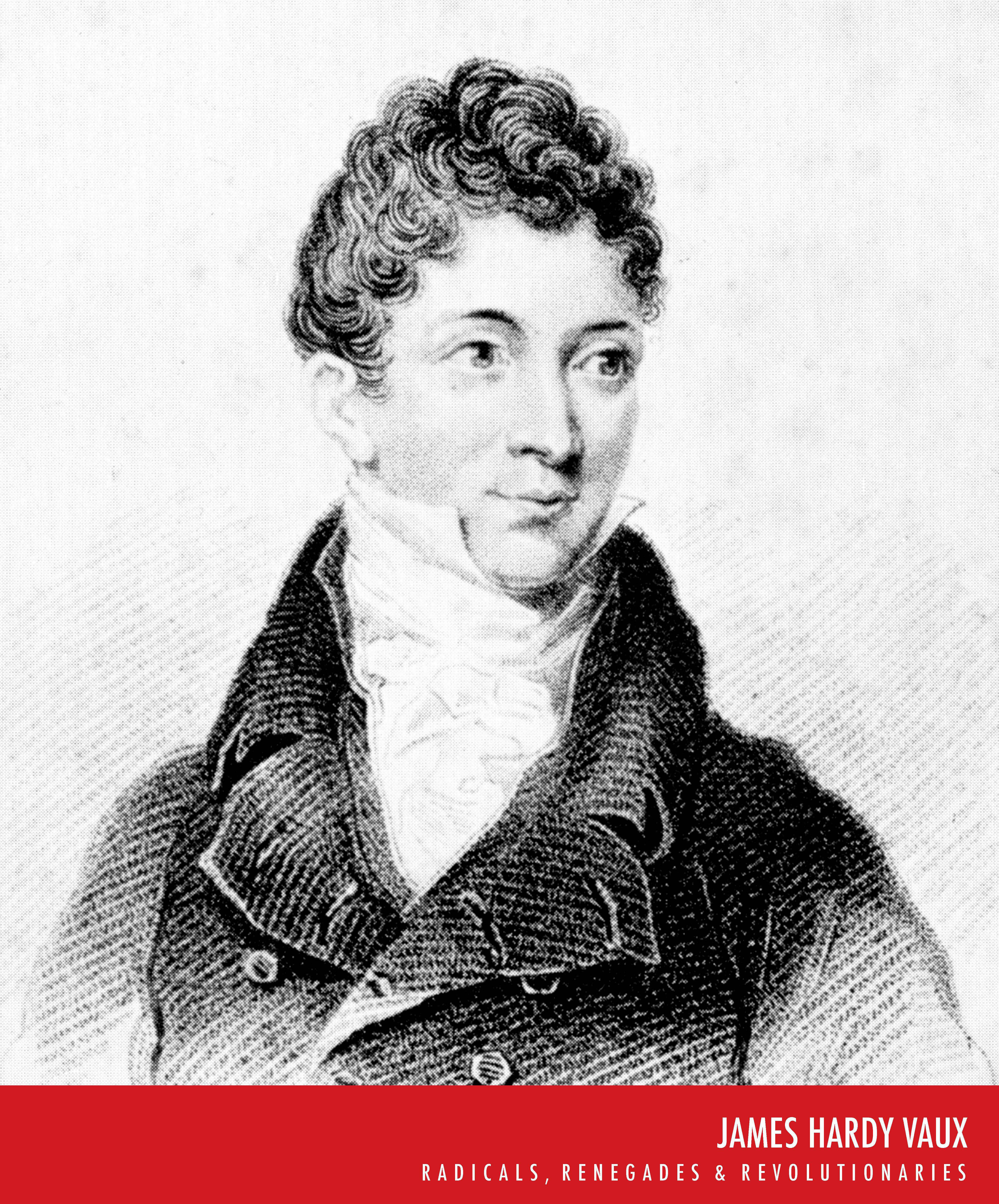
James Hardy Vaux (1782-1841) was both a pickpocket and literary pioneer. Born in Surrey, England, he was a professional thief in London, and was sentenced in 1800 at the Old Bailey, recieving transportation to Australia for seven years for stealing a handkerchief. His second conviction was in 1809, for stealing a snuffbox, and this saw him sentenced to death at the Old Bailey under the alias James Lowe. Granted a reprieve, he was transported for life to NSW and spent time at the Newcastle penal settlement (1811-1814) under the reign of Commandant Thomas Skottowe. It was during this time he compiled a slang dictionary for the use of magistrates, the “Vocabulary of the Flash Language”, the first dictionary to be compiled in Australia. While in Newcastle as a convict, Vaux also wrote what would be the first full-length autobiography written in Australia, providing a fascinating insight of criminal life in London and the penal system.
Vaux was convicted in 1830 for passing forged bank-notes and was again transported to NSW, this time he was sent to Port Macquarie penal settlement. The only convict to recieve transportation sentences three times, he was allowed to return to Sydney in 1837 and became clerk to a wine merchant.
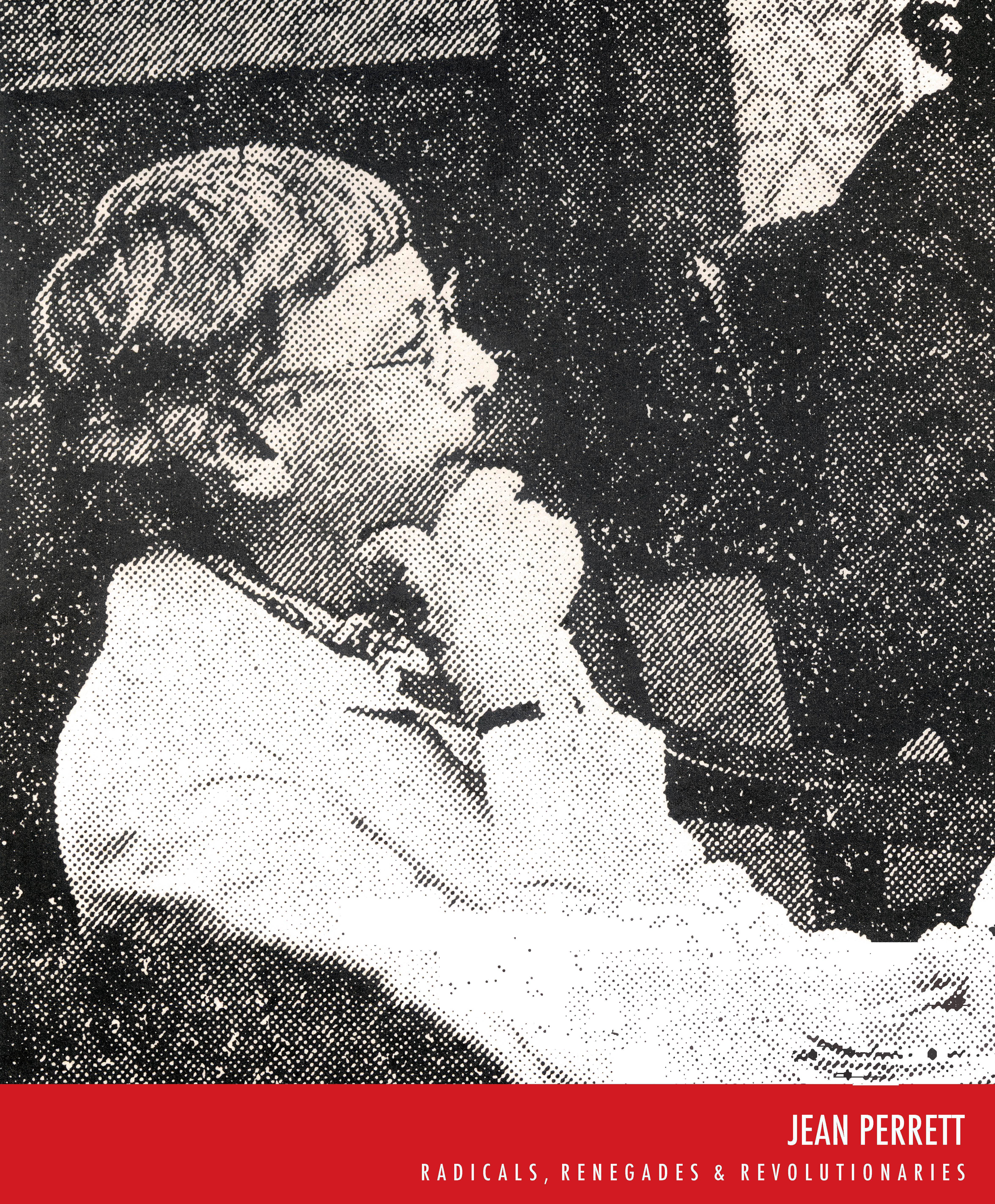
Jean Perrett was the founder of the Newcastle East Residents Group, an organisation that worked tirelessly for the creation of Foreshore Park during the 1970s and 80s, and for the preservation of the social and historic fabric of Newcastle. The ornate stairs from Stevenson Place are named in her honour, the ‘Jean Perrett’ stairs frame the entrance to the park.
A quiet and private revolutionary, she resisted any acclaim for her involement in actions for the preservation of Newcastle East. In an interview with former Trades Hall Secretary Keith Wilson in May 1984, shortly after Jean’s death, he described Jean as, “streets ahead; she was miles ahead of us all… and we can’t speak too highly of Jean Perrett… Very quiet, unassuming placid person, but deep in there she has a fighting heart second to none… sharp as a tack!”

Jim Comerford (1913-2006) was a union leader, activist and writer. Comerford was born in Scotland, and his family moved to Kurri Kurri when he was nine. He left school at 13 and worked at the local newspaper, but soon left to work in the mines. By the age of 15, he worked underground as a ‘pit boi at the Richmond Main Colliery and was eyewitness to one of the most significant events in Australian industrial history – the Rothbury Riot near Cessnock in 1929, where he joined protests against the use of non-union labour. This event influenced his life and politics and in 2006 he wrote Lockout, writing comprehensively about the Rothbury events through his first-hand knowledge of the riot and its political, social and cultural contexts.
A lifelong union advocate, he was at 29 the youngest person to be elected to the miner’s central councill and was President of the Miner’s Federation from 1953 to 1973. He later became a Convocation Scholar and writer-in-residence at the University of Newcastle. In 1996 a memorial Wall commemorating victims of mining tragedies in the Hunter Valley was unveiled in Aberdare, as a tribute to him by the United Mineworkers Federation.

Joanne McCarthy was born and raised on the Central Coast and completed a Bachelor of Arts from the University of Newcastle in 2003. In 2002 she began work at the Newcastle Herald writing about numerous community issues. In 2013 she received the Australian Journalist of the Year Award and the Gold Walkley Award for Investigative Journalism for her work on child sex abuse in the Catholic Church. Joanne also initiated the campaign ‘Shine the Light’ that led to the Royal Commission into institutional responses to child sex abuse.
Passionate about power imbalances in the community, McCarthy interviewed around 200 victims of abuse and uncovered suicides and drug overdoses of other victims. She has written more than 350 articles about child sexual abuse, mainly by Catholic clergy in Newcastle and the Hunter.
Former Prime Minister Julia Gillard wrote to her in 2013, 11Thanks in large measure to your persistence and courage, the NSW Special Commission of Inquiry and the federal Royal Commission will bring truth and healing to the victims of horrendous abuse and betrayal,”

Joe Richley was the president of the Northern Parks and Playgrounds Movement for 20 years and played a significant role in establishing Blackbutt Reserve and other regional parks. In 1934 Joe persuaded the New Lambton Council to purchase 6 hectares of New Lambton bushland for the reserve.
A further tract of land was later accquired for Blackbutt Reserve when Joe and the movement thwarted attempts by the Education Department, Newcastle City Council and the Main Roads Department, to use adjacent sections of land for redevelopment. Joe remained on the Blackbutt Reserve Committee, and also served as an alderman representing the mid-west ward on Newcastle City Council from 1953 to 1956. In the 1960s he was president of Hunter-Manning National Parks Association, vice president of the NSW National Parks Association and a member of Rathmines Development Panel, and the Civic Centre planning advisory committee. He was awarded the British Empire Medal in 1976 for services to the community. Joe was also great mates with Tom Farrell who was also committed to establishing green belts and parklands for the region.

John Bingle (1797-1882) was one of the earliest environmental campaigners in Newcastle, advocating for public parks and cultural amenities. He was a sailor, merchant and landholder, who first visited Newcastle in 1821 where he met Major Morisset who took him for a walk around the town. It was not until 1851 that he returned and established a business in Newcastle and became director of two banks, a member of the diocesan committee of Christ Church, and was the first Chair of the Newcastle Chamber of Commerce in 1856. As its first order of business the Chamber lobbied the Government to grant the Horseshoe beach, the coastline and the Windmill hill areas that Bingle had visited all those years ago to the citizens of Newcastle. The Chamber also asked for two blocks of land in Watt Street to establish an Exchange and Reading Room. Bingle and
the Memorialists had attempted to secure the Recreation Ground, but the decision was deferred by the newly established Newcastle Municipal Council; nevertheless Bingle helped to establish Newcastle Recreational Reserve now known as King Edward Park. Bingle died at Newcastle on 10 April 1882 and was buried beside his wife in Christ Church cemetery.
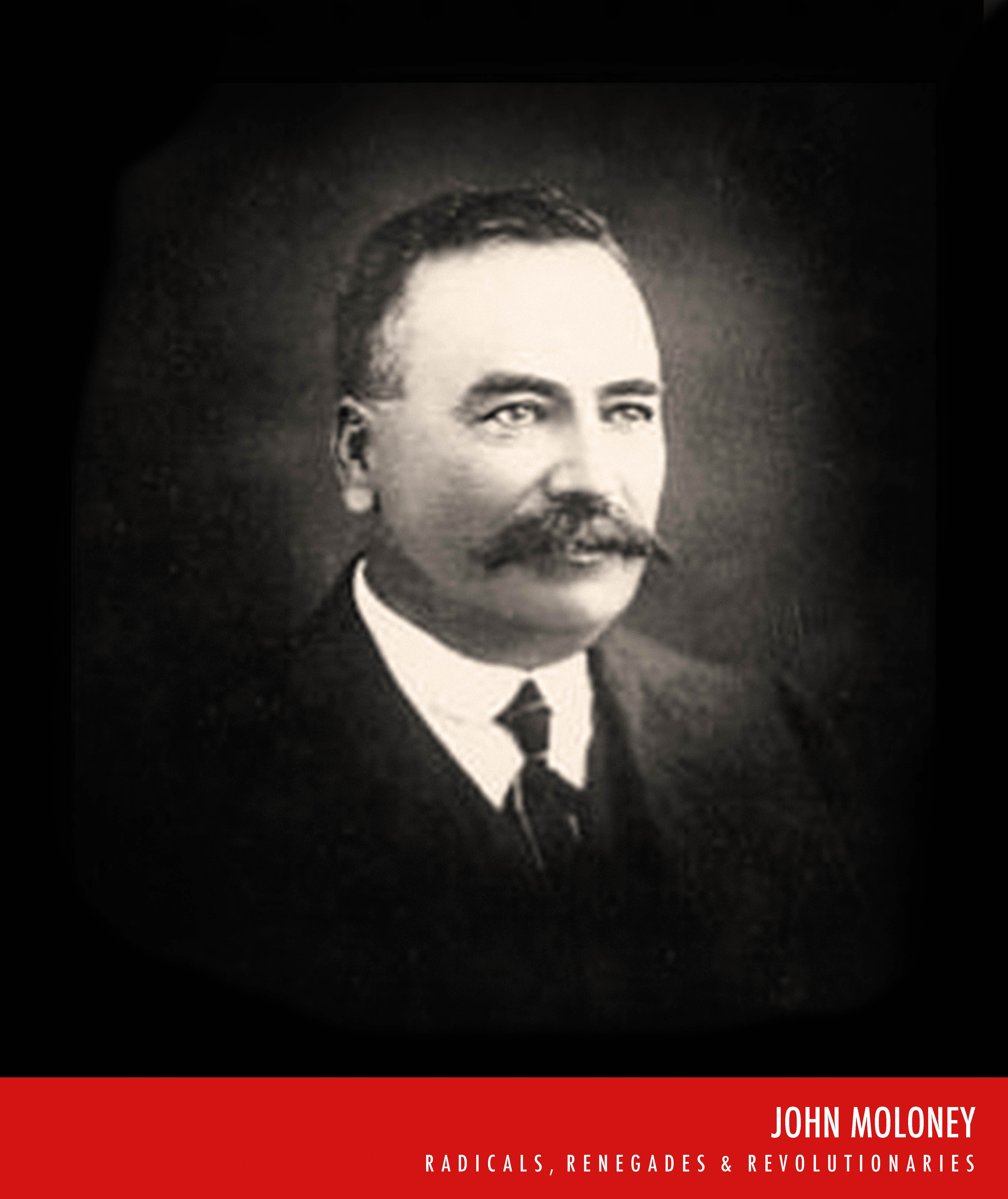
John J Moloney was a much-respected figure in Newcastle. He was a fierce nationalist, a newspaper editor, advocate for Australian history, an environmentalist, and a campaigner for Aboriginal rights. He also helped establish the Newcastle Surf Club and Life Saving Society in 1908. As the highly energetic and supportive editor of the Voice of the North (a newspaper first published in NSW in 191O), he was present at some of the pivotal moments in Aboriginal political history. He fought alongside prominent activists Fred Maynard, Sid Ridgeway and Tom Lacey at organised political protests in the 1920s. He was a supporter of the Aboriginal Areas Protection Authority and lobbied government for changes to Aboriginal affairs.
“The inequity of the position maddens me. To see these poor creatures kicked into the bush – worse that dogs – their homes, built by their hands, confiscated – no compensation. No redress for their children kidnapped by the Crown and sent to work … God forgive those white sepulchres who sit in high places and utter worthless platitudes whilst God’s own creatures cry for food and shelter of which they have been robbed by the vandals.” (Moloney 1926)

Jonathan Moylan is an environmental and anti-coal activist who in January 2013 made world headlines with his hoax press release stating that the ANZ bank had withdrawn financial backing to the Maules Creek coal mining proposal, in turn causing the stock price to plummet. In early 2012, Moylan set up a camp outside the Maules Creek mining site to protest against the mine and protect the Leard State forest near Boggabri. Whitehaven Coal earmarked $760 million to build and open the project and were met with resistance on the basis of the potential threat to the Indigenous heritage, the native plants and the animals of the surrounding region. Located in the Gunnedah basin seven hours drive northwest of Sydney it is considered one of the most controversial mines in Australia and it has been continuously opposed by the Gamilaray people, landholders, the town’s and community groups that continue to blockade the site.
The mine is 16km from the rail link that connects the mine to the port of Newcastle, a hotspot for conservation campaigns and campaigners as the port has the largest quantity of coal exports in the world.
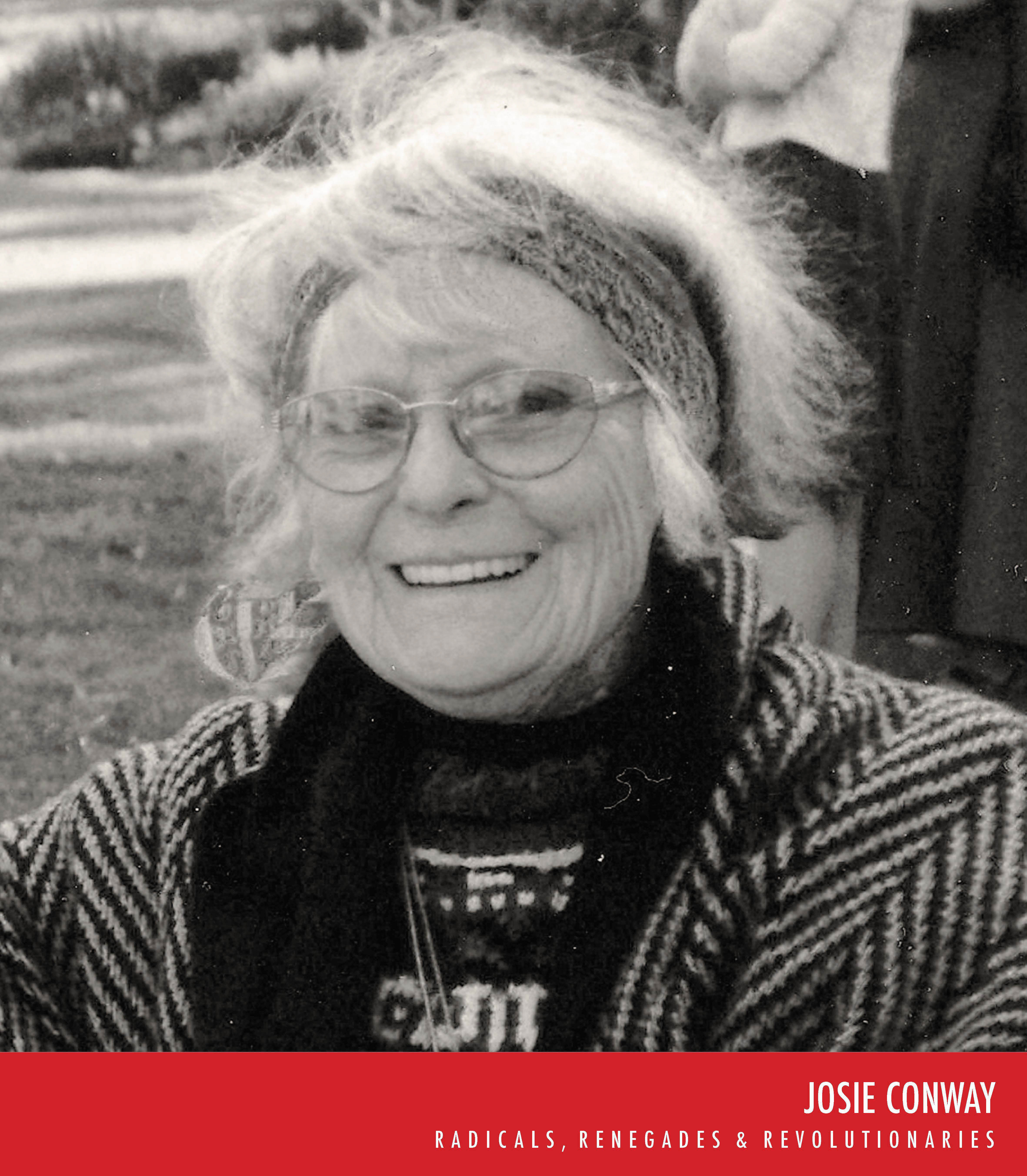
Josephine Conway (1920-2007) was one of Newcastle’s leading feminist advocates from the early 1970s through to the new millennium. In 1972 she joined the Women’s Electoral Lobby (WEL) and became an enthusiastic campaigner for women’s rights. As convenor of Newcastle WEL in the early 1980s, she helped organise influential seminars on issues like domestic violence and arrange ‘Meet Your Candidates’ functions before elections.
Josephine’s Cooks Hill home became a resource centre packed with information on women’s issues – with posters, leaflets and petitions to sign. Politicians, students, and women from all walks of life met there. Her home was the launching pad for local women’s groups and became a call-in support and advocacy centre. Josephine was also an active member of the International Women’s Cay (IWD) committee for over a decade.
Josie was the convenor of the ‘Right to Choose Abortion Coalition’ when it was established in Newcastle in 1982. Through public meetings, running stalls, and letters to the Newcastle Herald, she made her role as advocate for women’s rights very visible. She received threats and attacks, but was not one to be shaken from this cause. A women’s right to a safe and legal abortion remained her prime focus until her death in 2007.

Joy Cummings (1923-2003) left a great legacy of her years of leadership as Lord Mayor of Newcastle. She entered politics as an environmental campaigner with a vision for the city, and when elected Newcastle’s Lord Mayor in 1974, she was the first woman in Australia to hold that office. She changed the way local government operated in Newcastle, promoted the arts and the preservation of built heritage. She supported
environmental movements and promoted community and resident movements in Cooks Hill and Newcastle East and Merewether. Many heritage conservation areas were established because of the standards created by Joy to protect Newcastle’s heritage. She was involved in many environmental campaigns, such as Blackbutt Reserve and its extension into Richley Reserve, the saving of Civic Park, the Newcastle East
plan and the Harbour Foreshore Park.
In 1974 a road was put through the West End’s Birdwood Park, 17 trees were removed at dawn which angered the community. Joy cried on-site,
saying she was “ashamed” of being an alderman after the sudden action council had taken.
Joy was a passionate patron of the arts, the Hunter Valley Theatre Company, the Hunter Orchestra, the Art Gallery Society and many others. As
Mayor, she saw the development of Newcastle Mall and the redevelopment of Pacific Park, the establishment of the Newcastle Wetlands,
refurbishment of City Hall and construction of the Civic Administration building. Refurbishment of Civic Theatre as a live theatre venue and the
building of the Civic Playhouse, home of the Hunter Valley Theatre Company, were very dear to her heart. According to her family, her most
enduring and significant achievement for the people of Newcastle was the harbour foreshore park .
A Woman of Firsts –
First woman Lord Mayor in Australia – then Australia’s 6th largest city
First President of the NSW Women’s Advisory Council (Wran Government)
First woman to enter and address the Newcastle Businessmen’s Club and The Newcastle Club
First Lord Mayor to raise the Indigenous flag over a town or city hall
First Lord Mayor to hold a civic reception in honour of Indigenous people
First woman to be declared a Freeman of the City of Newcastle

Margaret Henry (1934-2015) was recognised for her service to Newcastle and its people as a teacher, mentor, environmental and heritage activist, and as an advocate for Aboriginal people, receiving a posthumous Freeman of the City of Newcastle award on Australia Day in 2016 .
Born in New Lambton, Margaret lived most of her life in Newcastle and was a community activist for over five decades. She was trained as a school teacher, and for much of her professional life she worked as an academic – mainly within the Department of History at the University of Newcastle and the Department of Community Programmes, responsible for the Open Foundation Course that mentored hundreds of mature aged students – in particular women and Indigenous students. She had an active involvement in establishing Indigenous studies at the UON that led to the
establishment of the Wollotuka Institute. This active support for Indigenous communities continued in her service as a Newcastle City Councillor and Deputy Lord Mayor, which saw her campaign for the establishment for the Guraki Committee. As a Councillor, she also advocated for the homeless, disability, refugee and migrant support networks, the Newcastle Museum and Art Gallery, heritage issues, library services and public art. Former council colleague and activist John Sutton described her as, ‘part of the fabric of Newcastle’.
After the 1989 earthquake, she established the Citizen’s Earthquake Action group and helped save culturally significant buildings from demolition, including the Royal Newcastle Hospital North Wing and Wheeler House. In that year she was also President of the Newcastle Hill Residents Group. The National Trust of Australia (NSW) accorded her the rare honour of an Honorary Life Member in 2009, and the following year she was awarded ‘Hunter Patron of Heritage’ by the Hunter Heritage Network Inc. She was also involved in political parties, the ALP (1968-88) and later, she was a foundation member of the Hunter Green Network that became Newcastle Greens in 1991. In 1992 she was a foundation member of Save Our Rail Inc. and continued to advocate for the retention of heavy rail services to Newcastle Station until her illness in 2015.
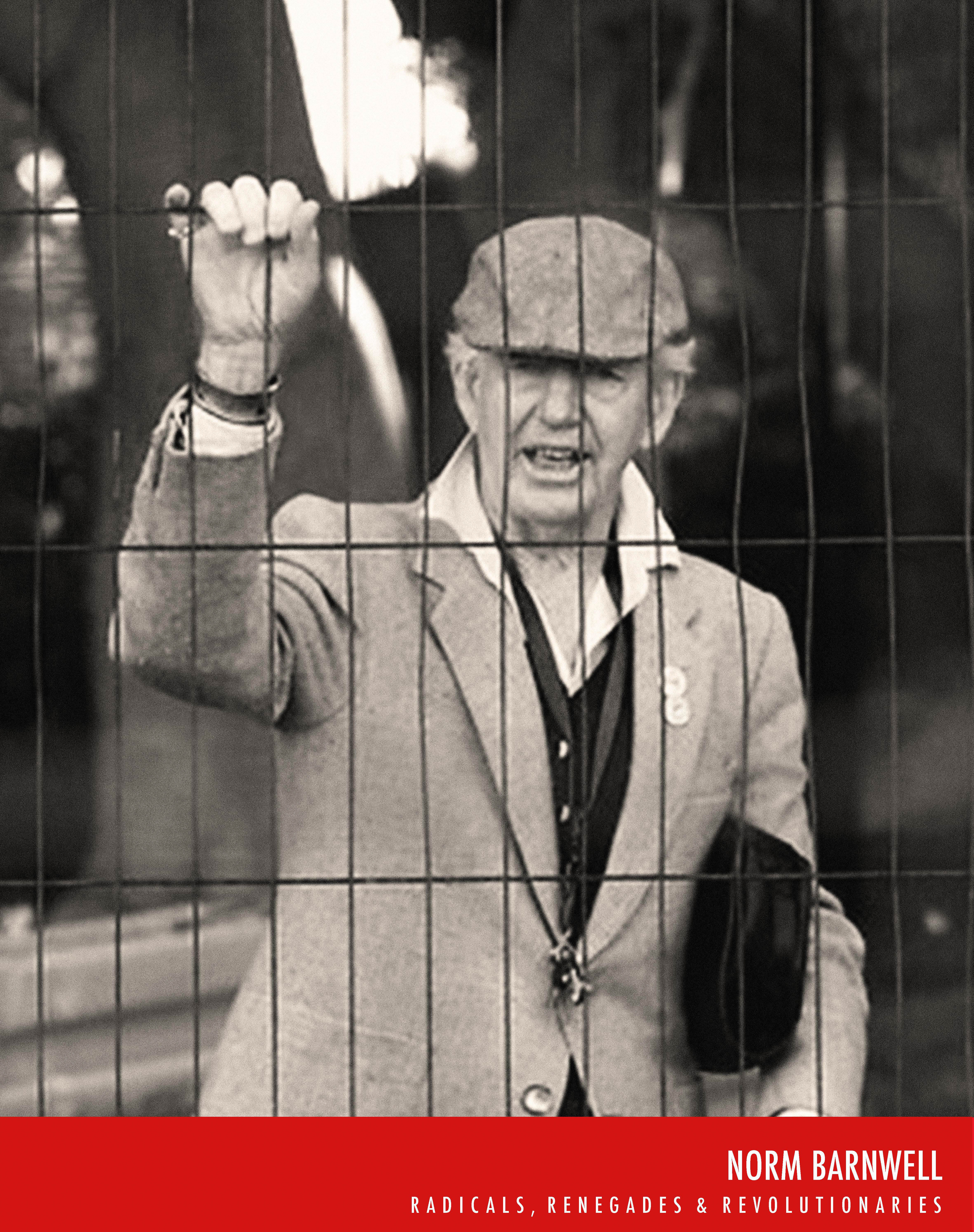
Norm Barnwell (1928-2013) was born in Broken Hill and worked as a surveyor and teacher, who settled in Newcastle with wife Valerie and his four children. Norm was well known in Newcastle for his dedication in protecting public parks. He was the original campaigner for the ‘Battle of Birdwood’ in 1973 to ave the fig trees in Newcastle West. These trees were given the ‘chop’ to make way for the extension of King Street. Arrested and charged for obstructing the removal of the trees, Norm was released on bail after several hours. His passion for trees and the environment took him to the environmental campaigns at Roxby Downs and Franklin Dam, where he leant his support. In 2010, Norm protested against the removal of the fig trees in Laman Street, Cooks Hill and started a petition, collecting over 10,000 signatures. He was a regular at the barricade and always made his presence and views known in a gentlemanly fashion. Despite vigorous protests from the community, the fig trees were removed in January 2012.

Peter Gray (1980-2011) was a passionate environmentalist and activist who cared about people and about problems facing communities, and fiercely campaigned against logging and coal mining. He received a Bachelor of Arts degree at the University of Newcastle and was a member of the Rising Tide climate change action group. In 2006, he took the NSW Government to the Land and Environment Court over its environmental assessment of the Anvil Hill Coal Mine. The Court found in Gray’s favour, ruling that the NSW Government had failed to properly assess the impact of mining, the use of coal and the greenhouse gas pollution the action would cause. Greenpeace described it as a landmark case.
In 2009, he took Bayswater Power Station owners Macquarie Generation to the Land and Environment Court which was considered to be the first legal action aimed at curbing greenhouse gas pollution from a coal-fired power station.
Pete was an instigator of what is now the annual flotilla in Newcastle harbour that disrupts the movement of ships for a day at the world’s largest coal export port. He gained international media attention when he threw his shoes at the former Prime Minister during the ABC’s O&A program in 2010, in protest at John Howard’s decision to join the US invasion of Iraq.
Several months after this incident Pete Gray died from cancer. After his death his famous ‘volleys’ were auctioned and funds donated to the International Committee for the Red Cross to benefit the people of Iraq. Former PM John Howard endorsed the auction.
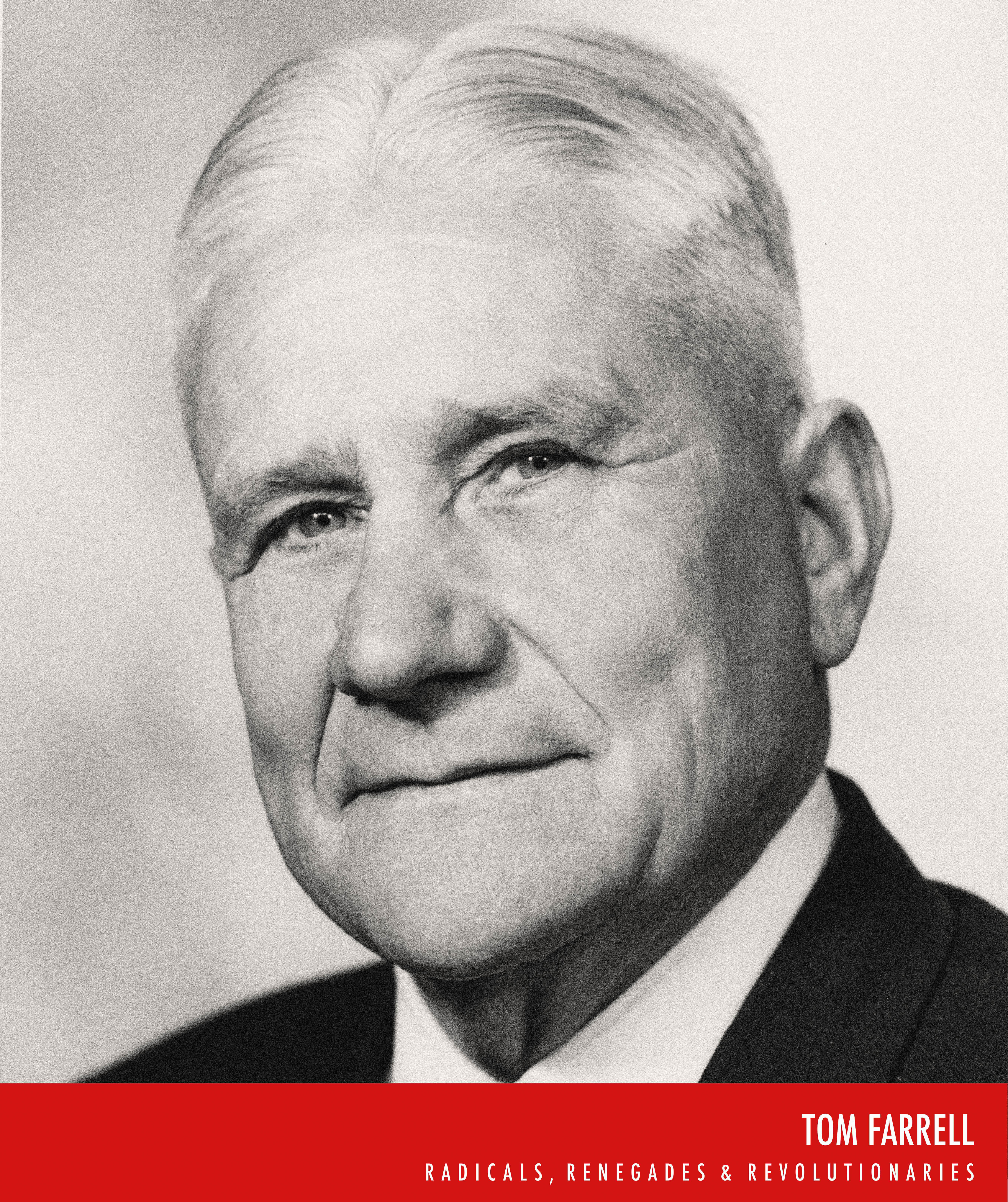
Tom Farrell (1904-1996) was born in Brisbane. Once in Newcastle he attended Cook’s Hill Junior High School, later working at R. Brickenridge Timber Merchants located on the site of the present Civic Park. He went on to take up a position at the State Dockyards, and finally at Newcastle Abattoirs where he was General Manager until 1968.
He is considered one of the “founding fathers” of the University of Newcastle, as he was instrumental in acquiring the land at Shortland for the campus. One of Newcastle’s early environmentalists, when a branch of the National Parks Movement was formed in Sydney during the 1920s, he joined and became an active member. He eventually became Vice President of the Northern Parks and Playgrounds Movement and was responsible for bringing the Movement to Newcastle in 1952, where it continues today, safeguarding the environmental heritage of the region.
He was involved in the conservation of Mt Sugarloaf, Barrington Tops and the Myall Lakes, and during the 1930s he and Joe Richley successfully lobbied New Lambton Council to have the area known as Blackbutt Reserve set aside for public recreation. Later, during the 1960s and early 1970s, Tom was a prominent figure in the successful campaign to prevent a highway being built through the reserve.

Vera Deacon is an historian, environmentalist and writer. Vera lived on Mosquito (Moscheto) and Dempsey Islands from the 1920s where her father fished the Hunter River, and along with other farmers, grew fruit, vegetables, and corn from the fertile soils of the Islands. The Island was famous since early colonial times for its oranges, grapes, bananas and milk. In their vessel the Lady May, Vera and her family sailed the river, often doing a round trip taking in Platt’s Channel to the South Arm, Hexham and Raymond Terrace, then via the North Arm and around Walsh Island to home. Vera left the island in 1951 when BHP began filling in Platt’s Channel. She remembers her father showing her unhealthy fish and dying mangroves saying, ‘They’re killing the river!’, a river that had sustained her family during the Depression.
Vera’s happy upbringing in an enquiring, knowledge-driven family, created a lifelong thirst for history that led in 2008 to the formal establishment of the Vera Deacon Regional History Fund, under the umbrella of the University of Newcastle Foundation to support and encourage regional history through the acquisition, preservation and study of valuable regional historical resources. Her contributions to the University’s Cultural Collections began in 1995 while she was researching the history of the island and she continues to be a strong advocate of the region’s social and cultural heritage. In 1964 Kooragang Island was first formed under what was known as the Islands Reclamation Scheme. Vera continues to be a strong advocate in preserving the Hunter River estuary Islands.

Wendy Bowman is a farmer and environmentalist who was awarded the Goldman Environmental Prize in 2017 in Washington USA, for her fight against mining expansion in the Hunter Valley. Since the 1980s, Wendy has fought tirelessly to protect her farm and the grazing lands located on the banks of a critical water tributary at Camberwell. Having had to relocate twice due to mining, her first legal action became a four-year battle where she proved her land had been destroyed by mining. The second threat came after she was served an eviction notice by miners to vacate her property – with only six-weeks notice. The third threat to her property, Wendy launched a significant case against Yancoal, one of the biggest mining companies in the world. After a lengthy battle in the Land & Environment Court in NSW, the court declared in 2014 that the mine expansion could proceed only on the condition that Yancoal could convince Bowman to sell her land. This condition effectively stopped the mine from going ahead.
“She’s the accidental activist. Tireless, strong, resilient… and fearless where she sees injustice. She will speak up, Wendy has taken a stand for all of us and for future generations.” said Sue Higginson, Chief Executive of the Environmental Defenders Office NSW.
Post curated by William Chen Greentree (WIL Communication student)
Updated on 3/09/2019
people we should be proud of. Correction; the spelling of Jim’s name is not even close!. Its Comerford.
Ross thank you for pointing out the error, is now fixed. Regards
Thank you Hunter Living Histories, I have read through all of these wonderful stories and am so pleased to say that, although I was not born in Australia, thanks to my 42 years in Newcastle, many if not most of names are familiar and some I have met or can call friends.
If there were to be any additions I would recommend Max Maddock and the women I called “the three Pats”, Pat Flowers, Pat Hyde and Pat Keating, all inspiring to me as a developing environmentalist.